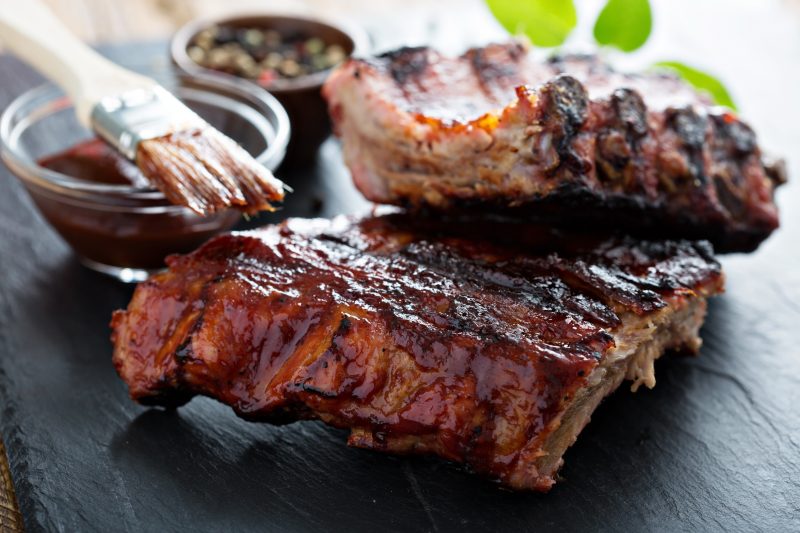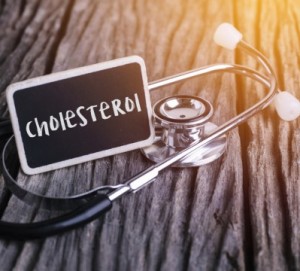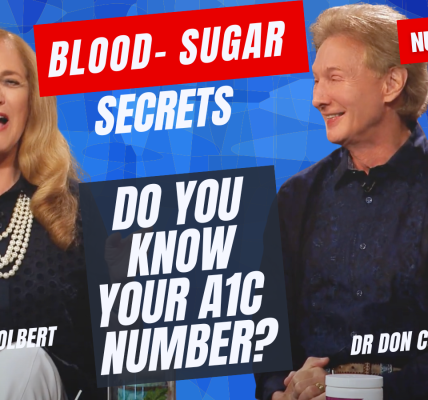One of the toughest parts of keto zone eating is foods with hidden carbs.
They are seemingly everywhere.
After you’ve learned about carbohydrates and the foods that contain obvious amounts, you have to work further to find the hidden ones.
You have to detect them, and then omit or minimize them.
And along the way, many products make it harder with misleading or confusing marketing claims.
Why are carbs hidden?
There are a few reasons.
It may simply be a lack of knowledge, and not be obvious that carbs or sugar are in a specific food.
Or, perhaps the packaging claims “sugar-free” or “low-carb.” These have become buzzwords in multi-billion dollar low-carb food industry.
When eating out or even making a recipe at home, you may be surprised to find out which options and ingredients have added sugar.
Here are the Top 8 Foods with Hidden Carbs and how to detect, and minimize them.
Keto Zone and Net Carbohydrates
First, let’s discuss what we’re detecting and why.
We are looking for total carbohydrates and fiber to calculate net carbohydrates.
Even small amounts of extra carbohydrates can keep you from being in the keto zone (1). Since most keto zone eaters aim for 20 grams net carbohydrates per day, it’s easy to reach this total too quickly if you’re not careful.
This doesn’t mean that all foods with carbohydrates, or net carbohydrates, are unhealthy, it just means you need to pay attention to them if you want to be in the keto zone.
Sort of like a bank account, you only have so many net grams of carbohydrates to “spend,” or eat, per day.
To find the net carbohydrates in a food, find the total carbohydrates (this is a total of sugars and starches) and subtract out the fiber. This number is the net grams of carbs.
Unfortunately, product marketing can still make this tough.
Keto Zone vs. Food Packaging
Quite a bit of confusion comes from food packaging itself.
Basically, a manufacturer can make a lot of false or exaggerated claims on the front of a package. Unless it’s a strict health claim, it’s not well regulated.
So, they may state the packaged food is “low-carb,” a “keto food,” sugar-free” and more. They may or may not be.
As the consumer, it’s up to you to investigate beyond these claims.
To start, follow my #1 rule for food packaging:
Ignore everything you read on the front side of the packaging. It’s marketing. Some marketing is truthful. Some aren’t. Ignore.
Then, go to the ingredients list. Although there is still some ambiguity here, with ingredients like “natural flavors,” etc., it is still a better gauge than product packaging claims. You’ll get a good idea of what’s in the food.
Some common ingredients that are sugar, but called something else include syrups, molasses, honey, maple, date sugars, and more.
Decide: Are you okay with everything that’s in it? If so, move on to the ingredients label.
Pay special attention to total carbs and fiber to calculate the net carbs. Pay extra special attention to the portion size listed at the top of the label. Sometimes, manufacturers will use a ridiculously small serving size to make the food look lower in carbs. Double check the portion!
And, be aware of the top 8 foods with hidden carbs.
Top 8 Foods with Hidden Carbs
Some foods hide carbs more than others. Let’s bring these 8 foods into plain sight.
1. Condiments, Dressings, and Commercial Sauces
Commercial condiments and sauces are one of the biggest sources of hidden carbs. It’s not uncommon for barbeque sauces, ketchup, salsas, and dressings to have 5-10 grams of net carbs per serving!
This is in just 2 Tablespoons.
These foods seem to be tricky because we don’t think of them as “sweets.” But, often they are.
If it comes from the store, simply check the label for net carbs and pay special attention to the serving size. You’ll find that it’s often easier to make your own.
And luckily, more and more companies are producing good keto condiments. Still always check the labels for yourself.
Of note, while most vinegar has 0 grams net carbs per serving, balsamic vinegar has 2 grams. Always check!
2. Spices
Believe it or not, some plain spices in your spice rack contain carbohydrates. When you think about it, this is not completely surprising. Spices are simply natural foods, grown like fruits and vegetables.
Still, since they are often on a “safe list” for keto zone eating, it may be a shock to find out the following spices contain enough carbs to derail the keto zone. Here is a list of spices that contain carbs, per Tablespoon (2):
- Garlic Powder – 5.2 grams net carbs
- Onion Powder – 5 grams net carbs
- Chili Powder – 3.1 grams net carbs
- Ground Cumin – 2.1 grams net carbs
- Oregano – 1.8 grams net carbs
- Paprika – 1.8 grams net carbs
- Cayenne – 1.5 grams net carbs
On the other hand, these ground and dried spices have <1g net carb per tsp:
Tarragon, Mint, Basil, Cinnamon, Ginger, Cloves, Black pepper, Coriander
As for blended spices, Curry powder, Chinese 5-spice, garam masala, pie spice, Bouillon cubes and powders have <=1 grams.
Other blended spice mixes should have an ingredients list and label, so when in doubt, read them carefully.
3. Meats
I know, I know. This just isn’t fair.
Meats and pure proteins should be one of the automatic keto zone carb-free foods. But, this is not always the case.
Like any animal product, the nutritional makeup of the meat is dependent on the animal’s diet and its function in the body.
For example, livers store carbohydrates in the body. So, it’s no wonder that the livers we eat contain carbs.
Meats with carbohydrates, per 4 oz., include (2):
- Liver from beef (3.1 grams), from chicken (1 g)
- Shellfish: Imitation crab meat (12-15 grams), Mussels (8.4 grams), Oysters (8 grams), Scallops (2.5 grams), Natural crab (1 gram)
- Kidney (1.1 g)
- Eggs, 1 large (0.6 grams), Egg subs (1 gram per ¼ cup)
4. Sugar-Free and Low-Carb Packaged Foods
Again, sugar-free, low-carb, and keto are words you’ll see on the front of the packaging. They are used for marketing.
Turn that package over and see what’s really in the food.
Sugar-free may not have sugar, but it may have starches. Or, it may have natural, non-sugar sweeteners such as honey, maple, or dates. These are still sources of carbohydrates. Look at the ingredients and label.
What’s more, “low-carb” is a subjective term. This may mean 5 grams net carbs. It may mean 1. Don’t trust their definition. Look at the label and find out for yourself.
5. Recipes that claim “no added sugar” or “keto.”
Similar to food packaging, recipe writers use these words to market their recipes. And similarly, they can be subjective terms.
First, look at the ingredients list. Then, if provided, the nutrition information.
If the nutrition information not provided, you can use free online software to figure out the grams of carbs and fiber yourself on a site like www.nutritiondata.com.
If the information is provided, you may be able to trust it, but I still recommend looking at the ingredients to double check.
Of note, “no-sugar-added” recipes often use honey, maple, and natural food sweeteners.
6. Non-Grain Flours
Of course, compared to traditional wheat flours with 19 grams net carbs per ¼ cup, nut-flours and alternatives are significantly lower.
But, if you’re aiming for keto zone, every gram can count, so make sure you count them!
Most all these flours have a nutrition label, so check your net carbs.
For example, per ¼ cup, coconut flour has 6 grams net carbs, soy flour 5 grams net carbs (not recommended), and most nut flours have 2-3 grams net carbs.
7. Starchy Vegetables
Most keto zone eaters are aware of the carbohydrates in starchy vegetables. But, many don’t know which qualify as a starchy vegetable and which don’t!
Starchy vegetables include beans (pinto, lima, black, kidney beans, etc.), carrots, parsnips, corn, peas, potatoes, yams/sweet potatoes, winter squash such as butternut and acorn, and more. Most of these vegetables have about 6-10 grams net carbs per ½ cup cooked.
On the other hand, salad vegetables and greens are much lower in carbs and very nutritious. Typically, they have 2-3 grams of net carbs per 1 cup fresh.
To find out exact amounts, you can look up most all foods on www.nutritiondata.com.
8. Restaurant Foods
Restaurant food detection requires an accumulation of the whole list. If the food seems sweet, is a combination of many foods (like soups), or is otherwise unknown to you, ask or order something that is.
For example, soup may be thickened with cream (lower carb) or with potatoes (high carb).
Usually, your best option is to opt for low-carb meats and greens. Season with olive oil and vinegar with salt and pepper. Drink decaf coffee for dessert. Be sure to check out our keto zone restaurant guide.
Bottom Line
Don’t believe the package marketing and always check the ingredients and nutrition label. If it’s not available, look up foods online, ask a restaurant server for more information, or stick to foods you know are keto zone. Don’t be fooled by titles of brand names. Carbs can be hidden, so always check for yourself.


















